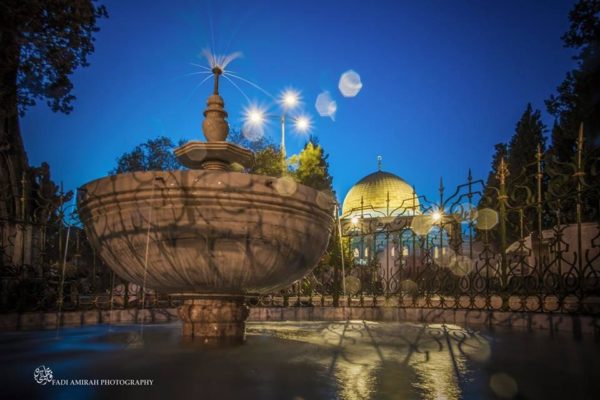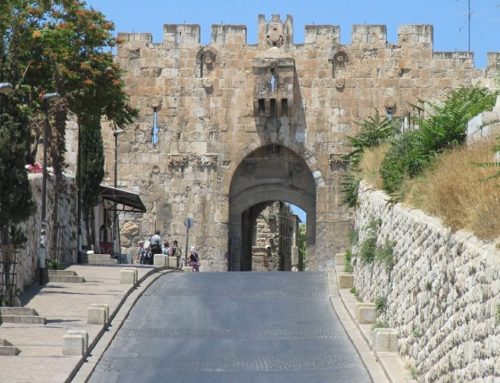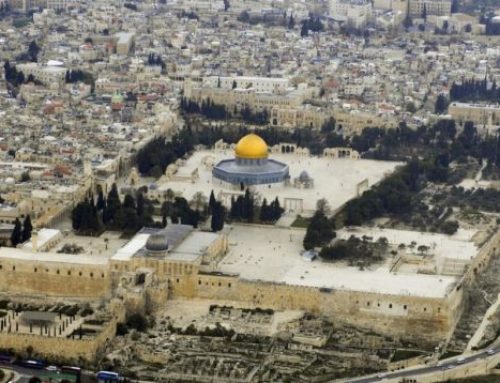Irrigating cities and providing their inhabitants with water was a priority for Muslim dynasties throughout Islamic history-particularly if those cities were central to the caliphate or heavily populated.[1] One of the ways in which this goal was accomplished was by commissioning the building of drinking fountains throughout different cities like Jerusalem that could be used for drinking or ablution. [2]
Al-Aqsa Fountains
Al-Aqsa has many fountains distributed in the plaza of the mosque.[3] Most of the fountains date back at least to the Mamluk period and many were rebuilt during the reign of the Ottoman Sultan Suleiman the Magnificent.[4]
Construction
Because the fountains built near Al-Aqsa were built or renovated in different eras, their architectural styles differ. Some of them are shaped like pools like the cup fountain and the Narinj fountain, some look like tanks like the King Issa fountain, some like a square room with windows,and still others are basins or are shaped like ordinary kitchen taps .[5]

List of Al-Aqsa Fountains
|
The Cup Fountain |
The Hetta Gate Fountain |
|
The Sha’alan Fountain |
Al-Narinj Fountain |
|
The Beseiri Fountain |
The Great King Issa Fountain |
|
The Qatibai Fountain |
The Moses Dome Ablution Fountain |
|
The Qasim Basha Fountain |
The Ablution Terrace Fountain |
|
The Suleiman Fountain |
The Southern Arcature Fountain |
|
The Sheikh Badeir Fountain |
The Olive Fountain |
|
The Moroccan Fountain |
The Mercy Fountain |
[1]Hassan Mustafa Khater, Al-Quds: the Educational Pictorial Atlas (Jordan: International Jerusalem Center for Media, International Studies and Documentation, 2013), 324
[2] Khater, Al-Quds, 325 and “Water Fountains in Al-Aqsa,” last modified March 14, 2016, www.aljazeera.net/encyclopedia/citiesandregions/2016/3/8/أسبلة-المياه-بالمسجد-الأقصى
[3] Khater, Al-Quds, 325
[4] Khater, Al-Quds, 324 and “Water Fountains in Al-Aqsa,” last modified March 14, 2016, www.aljazeera.net/encyclopedia/citiesandregions/2016/3/8/أسبلة-المياه-بالمسجد-الأقصى
[5] Khater, Al-Quds, 325






